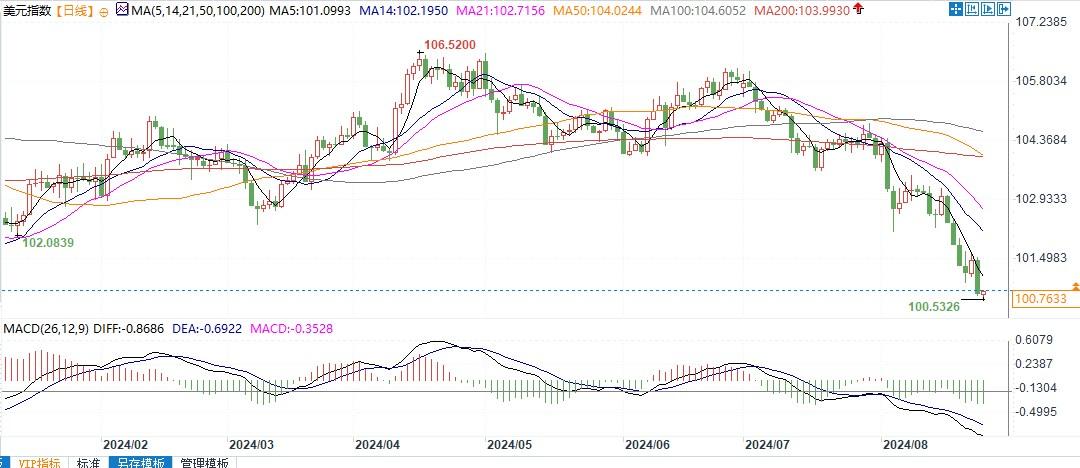If the US Composite Index falls below the annual low of 100.53, it will test 100 psychological support!
On Monday, the US dollar index continued to decline, hitting a 13 month low of 100.53 at one point. In the case of the unstable performance of the US treasury bond bond yield, as the Federal Reserve is more and more likely to start the easing cycle in September, the continuous selling pressure has put the US dollar at a disadvantage, and some comments of the Federal Reserve's interest rate setters have also contributed to the selling frenzy.
The US Composite Index fell due to factors such as Powell's dovish remarks
Last Friday, Federal Reserve Chairman Powell expressed his support for interest rate cuts at the annual Jackson Hole Economic Symposium, stating that further cooling of the US job market is not advisable. He expressed confidence in inflation approaching the Federal Reserve's 2% target.
Powell emphasized that the Federal Reserve does not seek or welcome further weakening of labor market conditions, and assured attendees that they will do everything possible to support a strong labor market while promoting price stability. He also stated that with the correct adjustment of policy constraints, there is ample reason to believe that while maintaining a strong labor market, the economy may return to a 2% inflation level.
So far, the Chicago Mercantile Exchange Group's FedWatch Tool believes that there is a 65% chance of the Fed cutting interest rates by 25 basis points in September, with 35% expecting a 50 basis point rate cut.
Although earlier concerns about an economic recession seem to have dissipated, the upcoming data could potentially impact monetary policy, particularly regarding the potential magnitude of upcoming interest rate cuts.
Since Harris became the Democratic presidential candidate in the November US election, opinion polls are now highly divided on possible outcomes. However, it is important to consider that if Trump is re elected, coupled with the possibility of re imposing tariffs, it could disrupt or even reverse the current deflationary trend in the US economy. This situation may lead to a shortened easing cycle of the Federal Reserve.
Looking ahead, all attention is expected to be focused on the inflation indicator favored by the Federal Reserve, namely the US July PCE Price Index, which will be released on August 30th. Although this reading is important for the Federal Reserve's interest rate cut plan, the market should have already digested this measure well before the data is released.
Technical analysis: The possibility of a decline in the US dollar index increases
Since falling below the critical 200 day moving average, the likelihood of the US dollar index being continuously sold has increased.
If the seller takes the initiative, the US dollar index may first fall to the bottom of 100.53 in 2024 and ultimately test the psychological level of 100.00.
On the upward trend, the US dollar index is facing the main force at the critical 200 day moving average level (103.99). If it can break through the 200 day moving average, the US dollar index may challenge the June 26 high of 106.13 and the 2024 high of 106.52.
On the daily chart, the relative strength index remains in the oversold area around 27, opening the door for potential rebound in the near future.

Daily chart of the US dollar index
Tips:This page came from Internet, which is not standing for FXCUE opinions of this website.
Statement:Contact us if the content violates the law or your rights
